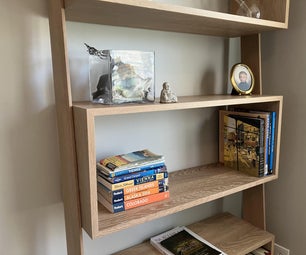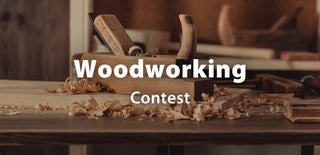Introduction: Live Edge Oak TV Console With Iron Pipe Legs
A friend of mine got in touch with me about wanting to make a TV console for him, so I decided I wanted to try something that I have never done before by using life edge wood and iron pipes for legs. I found these pipes and flanges for around $65 total on amazon. At Lowes or Home Depot it was about $160 so I highly recommend amazon.com.
Supplies
Live edge wood
Iron piping 4-(1" x 12") & 4-(1" x 3.5")
Iron flanges 16-(1")
screws
circular saw
drill
Step 1: Cutting and Sanding
Since the entire board was roughly 105 inches we tried to cut it almost evenly in half, but there was not a single square edge on this board so for the most part we had to cut what looked pretty much half and also what looked fairly straight.
After cutting I sanded with a hand belt sander with very low grit sand paper and then slowly went up grits on an orbital sander. This entire process took multiple hours and was very exhausting,
Step 2: Adding Mineral Spirits and Danish Oil
After the sanding put a coat of mineral spirits on to clean the board and get any dirt and dust off of it.
After drying we decided to use danish oil because I have heard good things about it and wanted to give it a try, personally I don't see the difference between danish oil and stain, the end result was almost exactly the same.
Step 3: Add Polyurethane
I had to go back to college so I gave the responsibility of putting the polyurethane to a friend. I told him to add a coat and then use 220 grit sand paper to sand between each coat and that's what he did. He ended up putting a total of three coats on and it finished with a perfect shine and smoothness.
Step 4: Assembly
The assembly was much more complicated than I thought it would be. Since there was no square edges we had to create our own rectangle inside the perimeter of the board using a carpenters square and a straight edge. We also drilled a hole directly through the center of the flange so that we will know exactly where we need to put the flange on the other side of the board. This was a very tedious process but it was very worth it in the end.
Step 5: Finally Done!
After many different iterations and planning steps we decided on this beautiful piece and I think it couldn't have turned out any better!

Participated in the
Woodworking Contest











